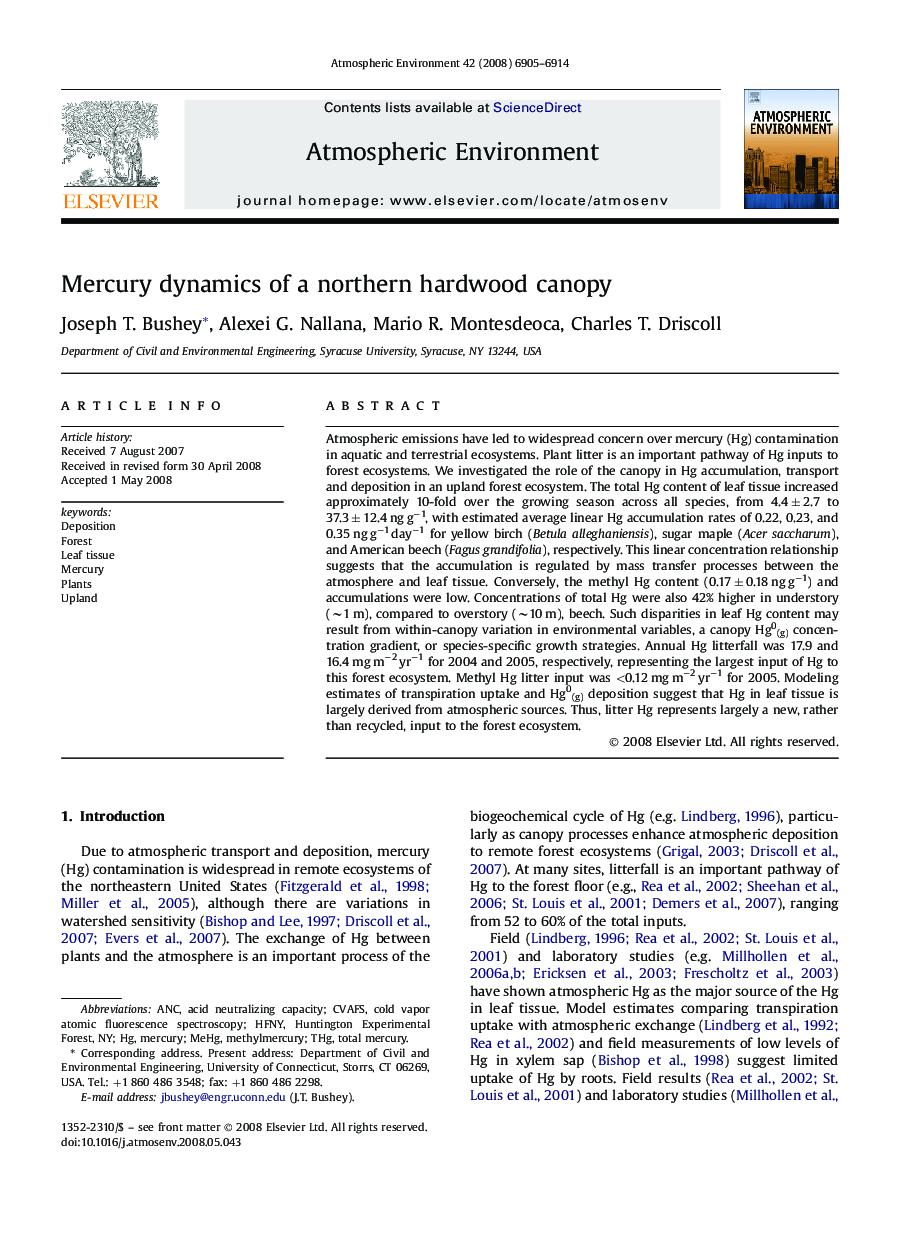| Article ID | Journal | Published Year | Pages | File Type |
|---|---|---|---|---|
| 4442375 | Atmospheric Environment | 2008 | 10 Pages |
Abstract
Atmospheric emissions have led to widespread concern over mercury (Hg) contamination in aquatic and terrestrial ecosystems. Plant litter is an important pathway of Hg inputs to forest ecosystems. We investigated the role of the canopy in Hg accumulation, transport and deposition in an upland forest ecosystem. The total Hg content of leaf tissue increased approximately 10-fold over the growing season across all species, from 4.4 ± 2.7 to 37.3 ± 12.4 ng gâ1, with estimated average linear Hg accumulation rates of 0.22, 0.23, and 0.35 ng gâ1 dayâ1 for yellow birch (Betula alleghaniensis), sugar maple (Acer saccharum), and American beech (Fagus grandifolia), respectively. This linear concentration relationship suggests that the accumulation is regulated by mass transfer processes between the atmosphere and leaf tissue. Conversely, the methyl Hg content (0.17 ± 0.18 ng gâ1) and accumulations were low. Concentrations of total Hg were also 42% higher in understory (â¼1 m), compared to overstory (â¼10 m), beech. Such disparities in leaf Hg content may result from within-canopy variation in environmental variables, a canopy Hg0(g) concentration gradient, or species-specific growth strategies. Annual Hg litterfall was 17.9 and 16.4 mg mâ2 yrâ1 for 2004 and 2005, respectively, representing the largest input of Hg to this forest ecosystem. Methyl Hg litter input was <0.12 mg mâ2 yrâ1 for 2005. Modeling estimates of transpiration uptake and Hg0(g) deposition suggest that Hg in leaf tissue is largely derived from atmospheric sources. Thus, litter Hg represents largely a new, rather than recycled, input to the forest ecosystem.
Keywords
Related Topics
Physical Sciences and Engineering
Earth and Planetary Sciences
Atmospheric Science
Authors
Joseph T. Bushey, Alexei G. Nallana, Mario R. Montesdeoca, Charles T. Driscoll,
